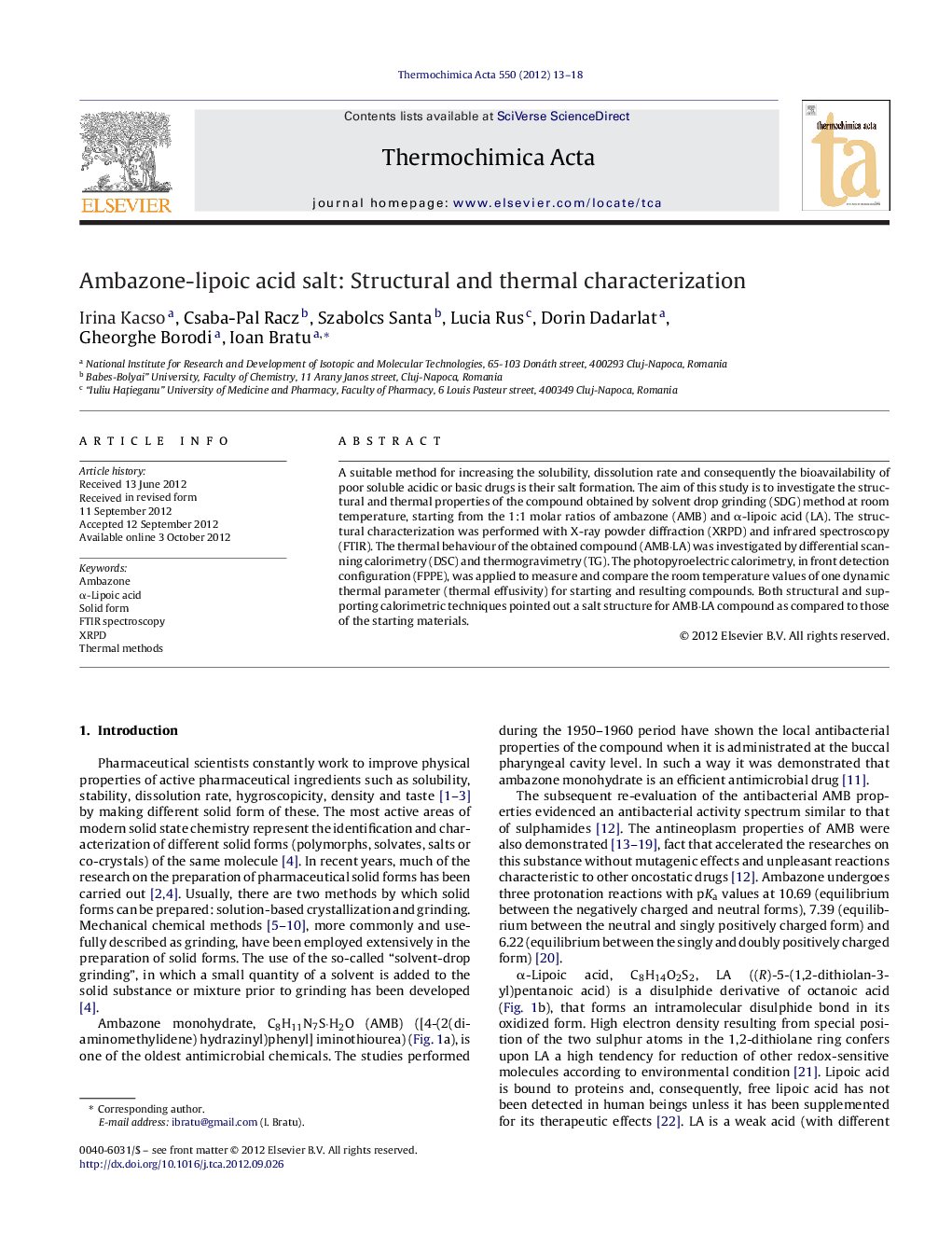| Article ID | Journal | Published Year | Pages | File Type |
|---|---|---|---|---|
| 673941 | Thermochimica Acta | 2012 | 6 Pages |
A suitable method for increasing the solubility, dissolution rate and consequently the bioavailability of poor soluble acidic or basic drugs is their salt formation. The aim of this study is to investigate the structural and thermal properties of the compound obtained by solvent drop grinding (SDG) method at room temperature, starting from the 1:1 molar ratios of ambazone (AMB) and α-lipoic acid (LA). The structural characterization was performed with X-ray powder diffraction (XRPD) and infrared spectroscopy (FTIR). The thermal behaviour of the obtained compound (AMB·LA) was investigated by differential scanning calorimetry (DSC) and thermogravimetry (TG). The photopyroelectric calorimetry, in front detection configuration (FPPE), was applied to measure and compare the room temperature values of one dynamic thermal parameter (thermal effusivity) for starting and resulting compounds. Both structural and supporting calorimetric techniques pointed out a salt structure for AMB·LA compound as compared to those of the starting materials.
► Salt of Ambazone with lipoic acid obtained by solvent-drop grinding. ► Ambazone lipoate salt crystallizes in monoclinic system. ► FTIR data suggest the deprotonation of the lipoic acid. ► Thermal behaviour different of ambazone salt as compared to the starting compounds.
